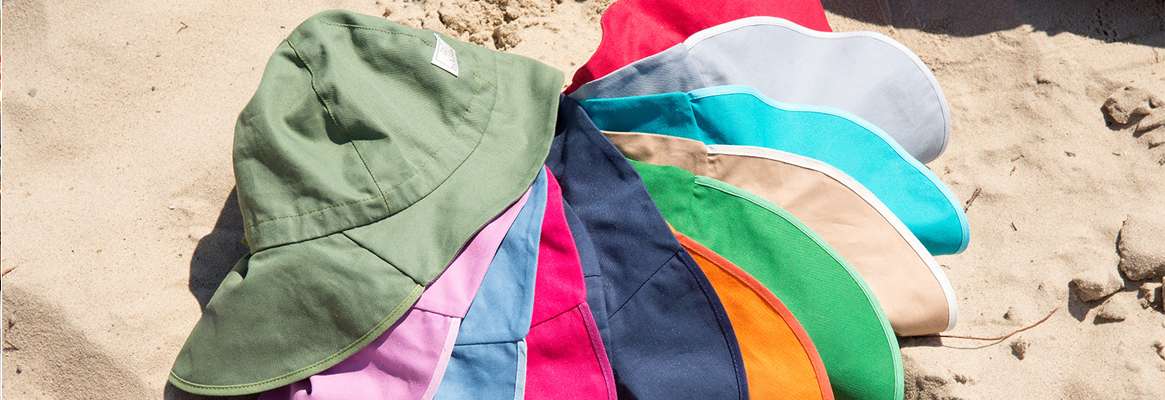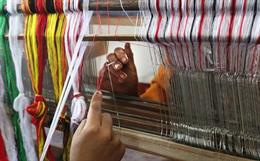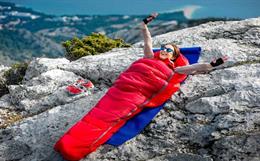Source:Textile Review
Protective Clothing
Clothing especially designed, fabricated, or treated toprotect personnel against hazards caused by extreme changes in physicalenvironment, dangerous working conditions, or enemy action. The term'protective clothing' covers a wide range of products, including highvisibility garments for worker's amongst traffic; flame-proof coveralls forracing drivers; flame and heat resistant turn-out suits for firemen; gas,liquid, and dust proof suits for the chemical industry's workers; chain-mailgloves for butchers; chain-saw stopping trousers for forestry workers; hardhats and hard-toe boots for building workers; welders' UV protective gloves andgoggles; hearing protectors, immersion suits, and buoyant garments for workerson water; rescue harnesses and fall arrest systems; bullet proof vests; and awide range of sports equipment from fencing masks to ice hockey goal keepers'whole body coverage with impact absorbing padding. Viewed simply, protectiveclothing is something an individual places between themselves and a hazard inorder to stay in the vicinity of the hazard with a reduced risk of injury.
Personal protective equipment (PPE) refers to protectiveclothing, helmets, goggles, or other garment designed to protect the wearer'sbody from injury by blunt impacts, electrical hazards, heat, chemicals, andinfection, for job-related occupational safety and health purposes, and insports, martial arts, combat, etc. Personal armor is combat-specializedprotective gear. In British legislation the term PPE does not cover items suchas armour. The terms "protective gear" and "protectiveclothing" are in many cases interchangeable; "protectiveclothing" is applied to traditional categories of clothing, and"gear" is a more general term and preferably means uniquelyprotective categories, such as pads, guards, shields, masks, etc.
PPE can also be used to protect the working environment frompesticide application, pollution or infection from the worker (for example in amicrochip factory). The protection may be important in both ways, as with theuse of disposable gloves by surgeons and dentists.
Sunscreen and its effect
Sunscreen (also commonly known as sunblock or sun cream is alotion, spray, gel or other topical product that absorbs or reflects some ofthe sun's ultraviolet (UV) radiation on the skin exposed to sunlight and thushelps protect against sunburn. Skin lightening products have sunscreen toprotect lightened skin because light skin is susceptible to sun damage.
Sunscreens contain one or more UV filters of which there arethree main types:
- Organic chemical compounds that absorb ultraviolet light (such as oxybenzone, a suspected photocarcinogen)
- Inorganic particulates that reflect, scatter, and absorb UV light (such as titanium dioxide, zinc oxide, or a combination of both).
- Organic particulates that mostly absorb light like organic chemical compounds, but contain multiple chromophores, may reflect and scatter a fraction of light like inorganic particulates, and behave differently in formulations than organic chemical compounds. An example is Tinosorb M.
Sun Protection Factor (SPF)
The SPF of a sunscreen is a laboratory measure of theeffectiveness of sunscreen the higher the SPF, the more protection a sunscreenoffers against UV-B (the ultraviolet radiation that causes sunburn).
The SPF is the amount of UV radiation required to causesunburn on skin with the sunscreen on, relative to the amount required withoutthe sunscreen. So, wearing a sunscreen with SPF 50, your skin will not burnuntil it has been exposed to 50 times the amount of solar energy that wouldnormally cause it to burn. The amount of solar energy you are exposed todepends not only on the amount of time you spend in the sun, but also the timeof day. This is because, during early morning and late afternoon, the sun'sradiation must pass through more of the Earth's atmosphere before it gets toyou. In practice, the protection from a particular sunscreen depends on factorssuch as:
- The skin type of the user.
- The amount applied and frequency of re-application.
- Activities in which one engages (for example, swimming leads to a loss of sunscreen from the skin).
- Amount of sunscreen the skin has absorbed.
The CPF, UPF and EPF Concept
Goyal et al (2005) explained the following concept:
CPF (Clothing Protection Factor):
UPF (UltravioletProtection Factor):This value is measure of UVR protection provided by a fabric. The UPF iscalculated as follows: assuming that the unpigmented skin of a person reddensafter 12 minutes exposure to the non day sun. When wearing a garment with UPF30, the same person will be able to spend 30*12=360 min or 6 hours in the samenoonday sun before suffering the same amount of sunburn (or receiving the sameamount of UVR). UPF ratings are determined by testing fabric in a laboratory inaccordance with Australian Standard AS/NZS4399:1996
EPF (Eye Protection Factor): A rating scale (1 to 10) applied to sunglasses. EPF 10+ will provide the 100% blockage against UVR. Sunglasses can block light but let through damaging ultraviolet rays, or they can block both safely. It is not the case that the darker the lens the greater protection it will give you. You are reliant on buying sunglasses which state clearly that they block a very high percentage of UVA and UVB. Ideally, the factor should be 100% or at least in the high 90s.
Effect of UV on human health
Exposure to the sun is known to be associated with different types of skin cancer, accelerated skin ageing, cataract and other eye diseases. There is also evidence that UV radiation reduces the effectiveness of the immune system.
Skin: Between 2 and 3 million non-melanoma skin cancers and over 130,000 malignant melanomas occur globally each year. A changing lifestyle and sun-seeking behaviour are responsible for much of the increase in skin cancers. In particular, frequent sun exposure and sunburn in childhood appear to set the stage for high rates of melanoma later in life. Depletion of the ozone layer, which provides a protective filter against UV radiation, may further aggravate the problem. Other chronic skin changes due to UV radiation include injuries to skin cells, blood vessels and fibrous tissue, better known as skin ageing.
Eye: Acute effects of UV radiation on the eye include photokeratitis, an inflammation of the cornea and iris, and photoconjunctivitis, an inflammation of the conjunctiva, the membrane that lines the inside of the eyelids. Long-term effects of UV radiation exposure of the eye may include the development of pterygium (white or creamy opaque growth attached to the cornea), and squamous cell cancer of the conjunctiva. Some 16 million people worldwide are currently blind as a result of cataracts; of these, WHO estimates that as many as 20% may be due to UV radiation exposure.
Immune system: The immune system is vulnerable to modification by environmental agents such as UV radiation, which appears to diminish the effectiveness of the immune system by changing the activity and distribution of the cells responsible for triggering immune responses. A number of studies indicate that environmental levels of UV radiation can suppress immune responses in both rodents and humans. In rodents, this immune suppression results in enhanced susceptibility to certain infectious diseases. It is therefore reasonable to suspect that exposure to UV radiation may enhance the risk of infection and decrease the effectiveness of vaccines in humans.
Vulnerable groups: Children are particularly sensitive to UV radiation and require special protection. More than 90% of non-melanoma skin cancers occur in fair skinned people who tend to burn. However, even though the incidence of skin cancer is lower in dark skinned people they are nevertheless susceptible to the damaging effects of UV radiation, especially to the effects on the eye and immune system.
Geographical Factors Effecting UV Radiation
The Sun elevation: The higher the sun in the sky, the higher the UV radiation level. Thus UV radiation levels vary with time of day and time of year. Outside the tropics, the highest levels occur when the sun is at its maximum elevation, at around midday (solar noon) during the summer months
Latitude: The closer to equatorial regions, the higher the UV radiation levels
Cloud cover: UV radiation levels are highest under cloudless skies but even with cloud cover, UV radiation levels can be high. Scattering can have the same effect as the reflectance by different surfaces and thus increase total UV radiation levels.
Altitude: At higher altitudes, a thinner atmosphere absorbs less UV radiation. With every 1000 metres increase in altitude, UV radiation levels increase by 10% to 12%.
Ozone: Ozone absorbs some of the UV radiation that would otherwise reach the Earth's surface. Ozone levels vary over the year and even across the day.
Ground reflection: UV radiation is reflected or scattered to varying extents by different surfaces, e.g. fresh snow can reflect as much as 80% of UV radiation, dry beach sand about 15% and sea foam about 25%.
Textile Materials and UV Protection
Sun protection involves a combination of sun avoidance and the use of protective garments & accessories. Reducing the exposure time to sunlight, using sunscreens and protective clothes are the three ways of protection against the deleterious effects of UV radiation. Apart from sunscreen lotions, textile materials and accessories made of textile materials are largely used for UV protection. UV protection through textiles include various apparels, accessories such as hats, shoes, shade structures such as umbrellas, awnings, and baby carrier covers and the fabric materials to produce these items.
Nature of Fibres
In textiles, UPF is strongly dependent on the chemical structure of the fibres. The nature of the fibres influences the UPFs as they vary in UV transparency. Natural fibres like cotton, silk, and wool have a lower degree UVR absorption than synthetic fibres such as PET. Cotton fabric in a grey state provides a higher UPF because the natural pigments, pectin, and waxes act as UV absorbers, while bleached fibres have high UV transparency. Raw natural fibres like linen and hemp possess a UPF of 20 and 10 to 15 respectively, and are not perfect UV
protectors even with lignin content. However, the strong absorption of jute is due to the presence of lignin, which acts as a natural absorber. Protein fibres also have mixed effects in allowing UV radiation. Dyed cotton fabrics show higher UPF, and undyed, bleached cotton yields very poor UPF values. Wool absorbs strongly in the region of 280 - 400 nm and even beyond 400 nm. Exposure to sunlight damages the quality of silk's colour, strength and resiliency in both dry and wet conditions. Mulberry silk is deteriorated to a greater extent than muga silk. Bleached silk and bleached PAN show very low UPFs of 9.4 and 3.9 respectively. Polyester fibres absorb more in the UV A & UV B regions than aliphatic polyamide fibres.
Moisture and Swelling
The ability of textile fibres to provide UV protection
varies depending upon the structure and other additives present in the fibres.
Besides, the construction parameters and wear conditions of the textile
materials, moisture and additives incorporated in processing also affect UPF of
the textile materials. In the case of moisture, the influence largely depends
on the type and hygroscopicity of fibres, as well as conditioning time, which
result in swelling phenomena. The RH and/or moisture content affect the UPF of
the fabric in two ways, namely the swelling of fibres due to moisture
absorption, which reduces the interstices, and consequently the UV
transmittance. On the other hand, the presence of water reduces scattering
effects, as the refractive index of water is closer to that of the textile
polymer, and hence there is a greater UV transmission vis--vis a lower UPF.
A typical cotton fabric could transmit 15-20% UVR; rising to
more than 50% if the garment is wet. For adequate protection, the UVR
transmission should be lower than 6% and 2.5% for extremely good protection.
Dependence of humidity is more pronounced in silk and viscose, of which viscose
has a higher water absorption and swelling capacity, while silk has poor
swelling properties. Even though silk has poor swelling properties, its very
fine nature and a greater number of fibres in the cross-section of yarn results
in higher swelling due to capillary absorption, and in turn less UV
transmittance. Finishing treatments given to the fabrics to reduce swelling
reduce the transmittance of UV rays. In general, hygroscopic fibres and their
UPF show better correlation.
Fabric Construction Factors
When the ultraviolet radiation hits the textile materials, different types of interactions occur depending upon the substrate and its conditions. The UV protection by textile materials and apparel is a function of the chemical characteristics, physico-chemical type of fibre, presence of UV absorbers, construction of fabric, thickness, porosity, extension of the fabric, moisture content of the fabrics, colour and the finishing given to the fabric. A part of the radiation is reflected at the boundaries of the textile surface. The UVR transmitted through textile fabrics consists of the unchanged waves that pass through the interstices of the fabrics as well as scattered waves that have interacted with the fabrics. Another part is absorbed when it penetrates the sample, and is converted into a different energy form. The portion of radiation that travels through the fabric and reaches the skin is appropriately referred to as the 'transmission component'.
The UPF increases with fabric density and thickness for similar construction, and is dependent on porosity (UPF = 100/ porosity). A high correlation exists between the UPF and the fabric porosity but is also influenced by the type of fibres. The relative order of importance for the UV protection is given by % cover > fibre type > fabric thickness. Cloth cover does not consider the flatness of the yarns, which might result in a higher cloth cover than the calculated value. A UPF with fabric weight and thickness shows better correlation than cloth cover. Therefore fabrics with the maximum number of yarns in warp and weft give high UPFs. UPF values of 200, 40, 20 and 10 can be achieved with the percentage cover factors of 99.5, 97.5,95 and 90 respectively. The percentage UVR transmission of a fabric is related to the fabric cover factor by (100 - cover factor) and the UPF is given by UPF = 100/ (100 -CF). To achieve a minimum UPF rating of 15, the cover factor of the textile must be greater than 93%, and a very small increase in CF leads to substantial improvements in the UPF of the textiles above 95% cover factor. In the case of terry cloth, a high variability in UPF exists due to irregularities in the fabric construction. Woven fabrics usually have a higher cover factor than knits due to the type of construction. Thick rib structures of hemp and linen can allow 10.52 - 12.70% and 9.03 -11.47% of UV A and UV B respectively. However, knitted structure made from a blend of synthetic fibres with Lycra offers the best protection against solar radiation, and warp-knitted blinds are capable of screening up to 80% of the solar radiation and bright glares.
Stretching reduces the UPF rating of the fabric during wear, as the effective cover factor is reduced. However, the cover factor can be modified through many dry finishing processes through overfeed on the stenter, compressive shrinkage processes such as compacting and sanforising, which are normally used to obtain dimensional stability, incidentally increasing the cover factor and hence the UPF. Gentle milling employed in the case of lightweight wool fabrics can also enhance the cover factor and the UPF.
Dyeing and Finishing
Depending upon the type of dye or pigment, the absorptive groups present in the dyestuff, depth after dyeing, the uniformity and additives, the UV protection abilities of the textile materials are considerably influenced. In a given fabric, higher transmission of UV radiation is observed in the case of bright fibres (viscose) than dull fibres. A protective effect can be obtained by dyeing or printing, which is better than using heavyweight fabrics which are not suitable for summer conditions. Darker colors of the same fabric type (black, navy, dark red) absorb UVR much more strongly than the light pastel colors for identical weave with UPF, in the ranges of 18 - 37 and 19 -34 for cotton and polyester respectively. Some direct, reactive and vat dyes are capable of giving a UPF of 50+. Some of the direct dyes substantially increase the UPF of bleached cloth, which depends on the relative t1ansmittance of the dyes in the UV B region. In many cases, a UPF calculated using a direct dye solution appears to be higher than that of the fabric after dyeing, mainly because the actual concentrations are mostly less than the theoretical concentration. Dyes extracted from various natural resources also show the UPF within the range of 15 - 45 depending on the mordant used.
Cellulosic fabrics transmit UV A and UV B equally with the transmittance ratio (TA/TB) 0.9. When dyed with the reactive dyes, the UPF increases from 4.7 to 5.0 - 14.0 depending upon the concentration, which is not sufficient to satisfy the minimum requirements. Some of the vinyl sulphone dyes and monochlorotriazine dyes possess UVR absorption characteristics, which also increase with the concentration. Cellulosic fabrics dyed with these dyes show reduced UVR transmission from 24.6% to 10-20% and 27.8% to 8-22% for UV A and UV B respectively. When mixtures of these dyes are used, the UPF increases synergistically. Some combinations of disperse reactive mix can give prolonged UV protection with a UPF of 50+ for PIC blends.
Optical brightening agents or fabric whitening agents are used at the finishing operations, as well as in the wash cycles, and their effect on UPFs has been demonstrated extensively in the past. Optical brightening agents are often applied to enhance the whiteness of textiles by UV excitation and visible blue emission. The phenomenon of excitation and emission is caused by the transition of electrons involving p-orbitals from either conjugated or aromatic compounds.
Most optical brighteners have excitation maxima within the range of 340 - 400 nm. OBA can improve the UPF of cotton and cotton blends, but not of fabrics that are 100% polyester or nylon. The presence of OBA in the PIC blends (67/33) to the extent of 0.5% can improve the UPF from 16.3 to 32.2, which is more or less closer to that obtained using the UV absorbers with 0.2% (UPF 35.5). Washing the fabrics leads to a loss of UPF in the case of OBA-treated fabrics, and the UPF reaches the level of that in untreated fabric after 10 washes, which shows the semi-permanent nature of the finish and protection. Another limitation of many OBAs is that they mostly absorb in the UVA part of the day light spectrum (93%) but have a weak absorption in UV absorption around 308 nm (92%), which plays an important role in skin disease.
References:
- Saravaban D.," AUTEX Research Journal" ,7(1 )2007.53-62
- Mallik S.K., Arora T., "UV Radiations: Problems and Remedies", Man Made Textiles in India2003 (5) 164 -169
- Achwal WB., "Use of UV Absorbers in Textiles", Colourage 1995 (10)44 -45
- Reinert G., Schmidt E., Hilfiker, "Use of UV Absorbers in Textiles", Textilverendlung 1994 (75) 606
- Gupta K.K., Tripathi V.S., Ram H., Raj H., "Sun Protective Coatings", Colourage 2002 (6) 35 -40
- EI Zaher N.A., Kishk 5.5., "Study of the Effect of UVR on the Chemical Structure, Mechanical Properties and Crystallinity of Nylon - 6 Films', Colourage 1996 (11) 25 - 30
- "Microscopical Observations of the Abrasive and Ultraviol Deterioration of NomexAramid Fibre", Textile Res. J. 1977 (3) 171 -177
- Hunt R., "Opportunities in UV Protection" Knitting International200J( 51 -53
- Gantz G.M., Sumner W.G., "Stable Ultraviolet Light Absorbers", Textile Res. J 27 (3) 244 -251
- Hustvedt D., Crews P.c., "The Ultraviolet Protection Factor of Natural Pigmented Cotton", The Journal of Cotton Science 2005 (9) 47 - 55
- Krizek D.T., Gao W., "Ultraviolet Radiation and Terrestrial Ecosystem" Photochemistry and Photobiology 79 (5) 2004 379 - 381
- Sunscreen - Wikipedia, the free encyclopedia.htm
- http://en.wikipedia.org/wiki/acacia-catechu
- http://www.bioone.org
About The Authors:
Neha Singh is an Assistant Professor, Department of Textile Design, NIFT, New Delhi & Prof. (Dr.) Suman Pant is associated with Department of Home Science, Banasthali University, Rajasthan.
Originally published in: Textile Review, August-2010





_Small.jpg)

